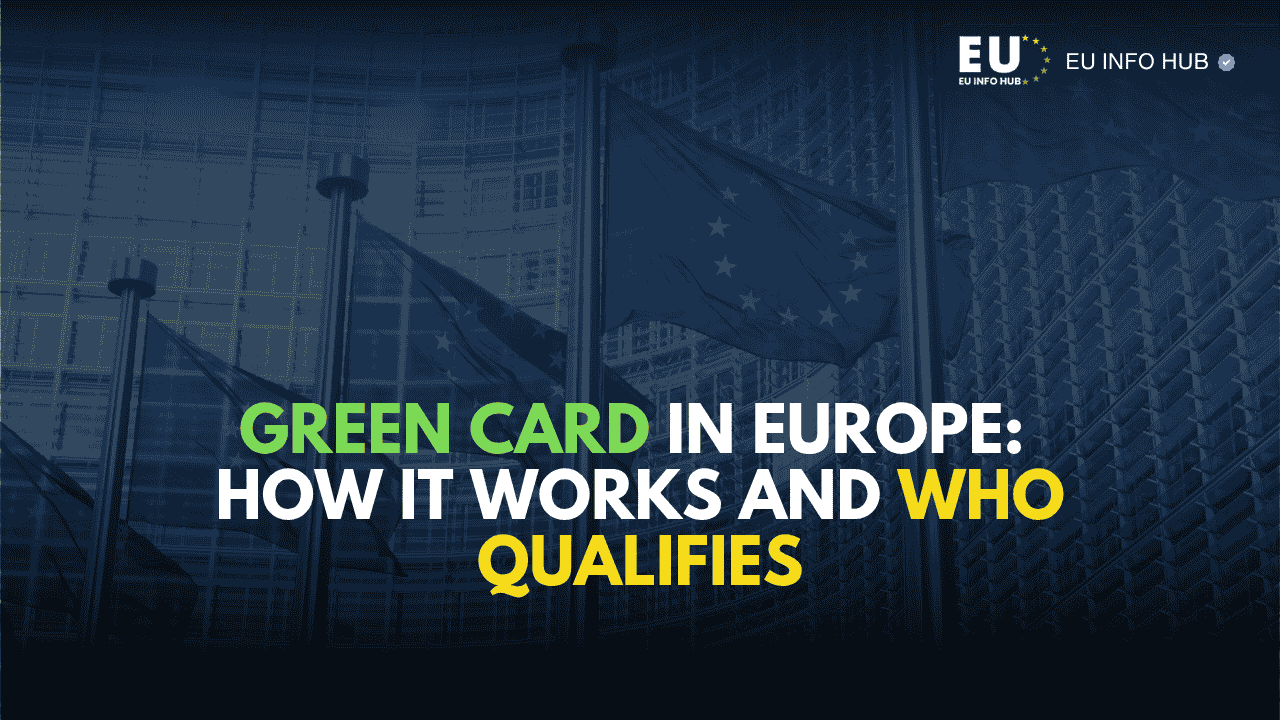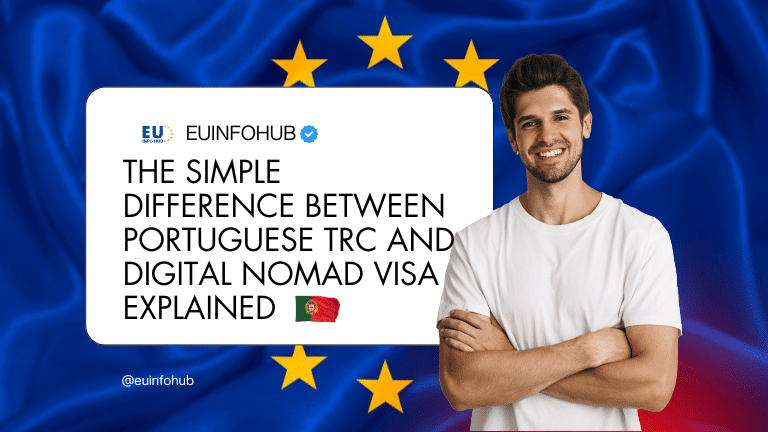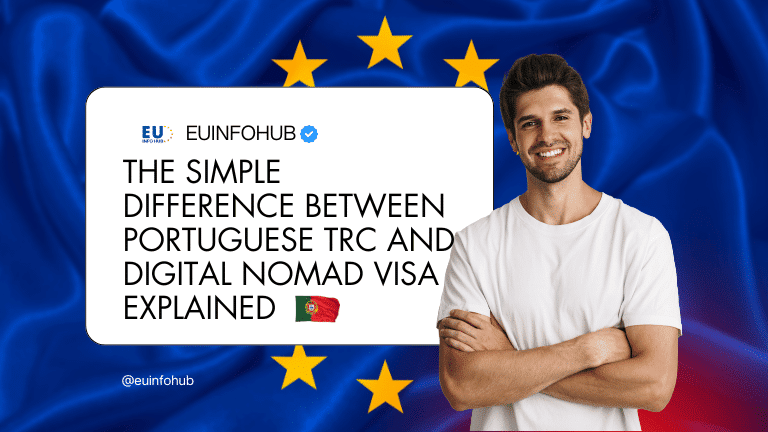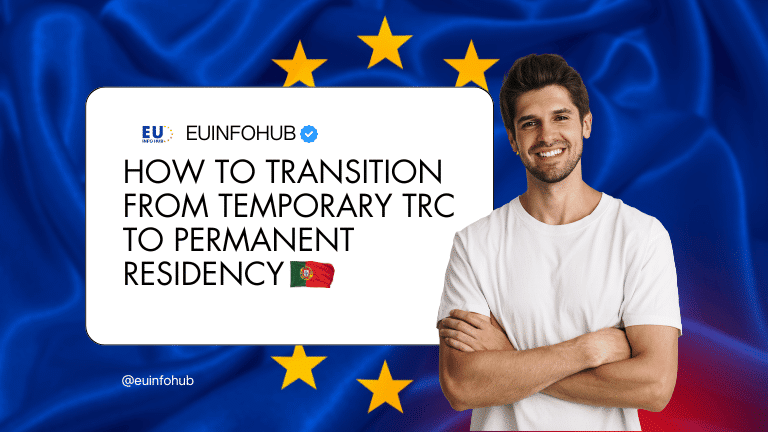There are many things to consider if you think of moving to Europe temporarily for work or permanently to settle. You may have read about a “green card” system, but how does this work in Europe? Is there any status that allows you to reside and work throughout Europe?
The purpose of this guide is to analyze the concept of Green Card Europe, along with how it compares with other permits, such as the European work visa. It will explain how options like blue card eligibility can put you on the fast track to European residency.
What Is the European Equivalent of a Green Card?
While the United States has a unified green card system, Europe does not have one. Generally, there are a number of kinds of residence permits or work visas, which function in similar ways to enable a legally resident non-EU citizen to live and work in a European country.
The EU Blue Card is the most prominent option for working and residing in many European countries for highly skilled workers.
A few countries typically offer an extension of stay for long-term residence visas will eventually lead to permanent residency or even citizenship over time.
The Purpose Behind These Permits
Though the official Green Card Europe label does not exist, its purpose remains the same: helping foreign professionals settle long-term in Europe. These types of permits are designed to attract international talent, fill niche skill shortages, and generate extra income.
Why No Single EU Card Exist?
Immigration laws still vary by country within the EU. That’s why the EU Blue Card only applies to certain nations, and national residence permits still play a major role.
Other Residency Alternatives
Apart from this Blue Card, countries provide a number of different paths, such as:
- Entrepreneur visas
- Tech and innovation permits
- Talent attraction programs
These also function similarly to a Green Card Europe and may be easier to obtain depending on your profession or country of choice.
Requirements for a Green Card-Type Permit in Europe
Qualifications differ in each country, but here is a list of some typical requirements for many countries:
- A valid job offer or employment contract
- Proof of qualifications or university degree
- Adequate income to support yourself (and your family)
- Clean criminal background check
Note: Requirements for a Green Card Europe permit are generally strict than short-term work permits.
EU Blue Card vs. National Permits
One of the biggest questions applicants have is: Should I apply for the EU Blue Card, or go with a national residence/work permit?
Here’s a quick comparison:
| Feature | EU Blue Card | National Residence Visa |
| Valid in multiple EU countries | Yes | No |
| Requires high salary | Yes | Depends on country |
| Leads to PR faster | Yes (usually within 33 months) | Yes, but the timeline may vary |
| Easier family reunification | Yes | Depends |
If you qualify, blue card eligibility is among the quickest ways to reside and work in the EU.
How to Submit an Application
Here is a step-by-step guide to the application process:
Obtain a Job Offer
You would require an employment letter from a European Company for immigration purposes, mentioning the specified position, salary, and contract duration.
Verify Eligibility in the Destination Country
Each EU country has its distinct set of criteria. Verify salary limits, degree validation, and previous work experience.
Apply for the Right Permit
This may either be an EU Blue Card, a European Work Visa, or a Country-Specific Permit.
Submit Your Documents
Commonly required documents:
- Passport
- Job contract
- University degree
- Proof of experience
- Health insurance
- Police clearance certificate
Wait for Approval
Countries vary in processing times. It might take a few weeks to a few months.
Popular Destinations for a Green Card in Europe
Some EU countries are more popular among skilled workers and offer faster or easier access to permits:
Germany
Has the most structured EU Blue Card system. Great for IT, engineering, and healthcare professionals. It also has fast-track processing and a well-established path to permanent residency.
Netherlands
This country recognizes foreign degrees easily and supports startups and entrepreneurs through its dedicated visa programs.
Sweden and Finland
Such countries have a good reputation not only for maintaining a healthy work-life balance but also for being open to skilled workers from other countries. They have good social benefits such as health care and child care, and they also offer services that make it easier for Newcomers to adapt to their new environment.
Other Notable Mentions
Skilled workers now find Ireland, France, and Denmark amongst their most popular destinations. The three countries are known to be in a strong position in the job market and they also offer simple right policies that make it easier for families to adapt to new homes.
Can You Bring Family with You?
Yes! Most Green Card Europe options allow you to bring dependents (spouse and children). In many cases:
- Family members can get residence permits
- Spouses can work
- Children can attend local schools
Family reunification policies are usually easier with an EU Blue Card.
From Temporary to Permanent
Many temporary work and residence visas are renewable. When you live in Europe for 5 years, you qualify for:
- Long-Term Residence Permit
- Permanent Residency
- Citizenship (in some cases)
But be prepared: maintaining a clean record, stable employment, and passing language or integration tests may be required.
Key Challenges When Applying for a European Green Card Equivalent
It is wise to make yourself prepared for some ongoing challenges during the application process for an EU Blue Card.
1. Translation and Certification of Documents
Many countries in Europe demand that official documents must be translated into the local language and these translations must be certified. Incomplete or poorly translated documents may result in delays and cancellation of the application.
2. Salary Thresholds Differ by Country
Each EU country sets its own minimum salary levels for residency permits, which vary according to job sectors. Some high-demand fields like IT may have lower thresholds, while others require higher income levels. It is necessary to check the local requirements before applying.
3. Processing Delays Are Common
Long processing times are also seen in certain countries like Germany or the Netherlands. So, prospective applicants should be prepared for potential delays and should avoid last-minute submissions.
4. Legal Compliance and Deadlines
Must adhere to deadlines strictly and meet legal obligations at every stage. Failures to meet deadlines or to submit mandatory information may cause a denial. Staying organized and taking legal advice if necessary.
Final Checklist Before You Apply
Think carefully about the aspects below before you apply:
- Do you meet the blue card eligibility criteria?
- Do you have an employment letter for immigration purposes?
- Have you reviewed the salary threshold for your destination country?
- Is your university degree recognized?
- Do you have all your documents translated?
If your response is Yes to the above-mentioned queries, you are very close to securing your Green Card Europe permit.
Wrap Up
Getting a Green card Europe equivalent is very possible if you are prepared, meet the criteria, and stay organized. Whether through the EU Blue Card or another path, Europe offers great opportunities for those who qualify.
It can’t be a difficult or time-consuming process to move to Europe if you know how to do it correctly. Need assistance with your application or document verification?
Contact EU Info Hub today to receive personalized help throughout your European journey.
FAQs
1. What is the Green Card equivalent in Europe?
The closest is the EU Blue Card, which allows skilled non-EU citizens to live and work in the EU.
2. Can I move to another country with the EU Blue Card?
Yes, after 18 months of employment in one EU country, you may go to another with a job offer.
3. What is the validity of an EU Blue Card?
Usually 1 to 4 years, and it’s renewable. It can also lead to permanent residency.
4. What if I fail to qualify for the Blue Card?
There’s always a chance to apply for a national work visa or residence visa according to your situation in Europe.












2 thoughts on “Green Card in Europe: How It Works and Who Qualifies”